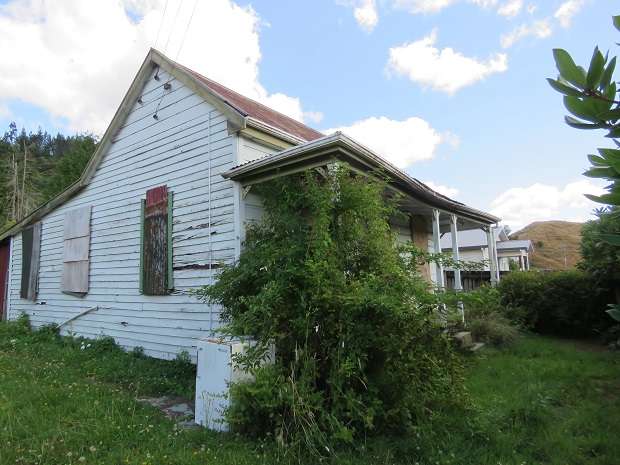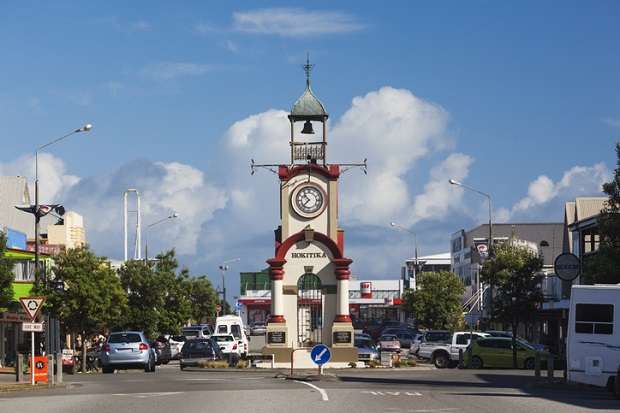ANZ recently identified the vulnerable parts of the country that are likely to see house price drops as a result of Covid-19 but one of them – the West Coast of the South Island – has yet to see the fallout, according to local real estate agents.
In fact, Charlie Elley, from Property Brokers, is pretty upbeat. He reckons camper vans with international tourists have been replaced by camper vans of Kiwis in some areas.
He also points out the West Coast is a long stretch of the South Island with different economies in different areas.
The biggest centre, Greymouth, does not rely on international tourists that much, so does not have tourists to lose, and has the hospital and other industry to keep it going, he says.
Start your property search
The town likely to be hardest hit is Hokitika, about half an hour south of Greymouth. Hokitika is the gateway to the scenic glaciers further south and the town where the two main highways into the Coast meet.
Elley says international tourists usually throng to the greenstone and tourist shops but there is a noticeable absence of buyers.

Local agents are billing the tiny mining town of Reefton as the Arrowtown of the Coast. Miners' cottages can go for as little as $79,000. Photo / Supplied
However, places like Karamea, at the northern end of the West Coast and near the popular Heaphy walking track, are proving popular with Kiwis who cannot head overseas so are choosing to see the country.
“When I was there yesterday the local café was run off its feet with Auckland tourists. There was a couple of dozen of them in the town.”
Retiring Kiwis heading to the Coast
House prices are staying steady, too, with a lot of the demand for West Coast homes being driven by both retirees from the Nelson/Marlborough area and also by Cantabrians seeking holiday homes.
In fact, the demand is so strong, Property Brokers has recently opened an office in the little historic gold mining town of Reefton.
“It’s very much a mixed situation,” says Elley. “Like other things, the West Coast gets sort of lumped as one place.
“We’re definitely seeing a reduction in tourists, but we’re actually seeing an uptake from Kiwis. The numbers probably aren’t overly different for most businesses, except for the likes of hostels or backpackers.
“The town that’s really affected is Hokitika. On any given day if you wander around Hokitika you would see dozens and dozens of foreigners. The town is okay but there is definitely the lack of the usual buzz of people going from shop to shop.”

Hokitika's drop in international tourists is balanced by strong growth in local tourists, plus the Westland dairy factory. Photo / Getty Images
But the town also has the Westland dairy factory which last year was bought by a Chinese company so has secured its position, and is a strong employer, Elley says.
The tourist trade might still improve with New Zealanders travelling through. People often stop to see the pancake rocks at Punakaiki, between Westport and Greymouth, on their way down to Hokitika and then further south.
MIning towns hit by trade drops, not tourist drops
The northern West Coast is a mining area and sees its fortunes rise and fall along with steel-making prices overseas. When prices are up, these little West Coast communities boom and when they are down they tend to struggle.
Prices are down now, due to Covid-19, but they will come right, Elley says: “That’s got absolutely zero to do with the tourism industry and is the main influencer on our economy.”
And, for now, the housing market is as busy as it has ever been, he says.
“What that probably hinges on is where our market’s coming from, and it’s coming from early retirees shifting south for the cheaper housing.
“That is continuing at the moment, but I suppose that will depend on their own market maintaining momentum. If the people buying houses [in other towns] exit from buying them, then we will pay the price.”
That could impact the sales in Reefton, too, the popularity of which has been “a real surprise to us.
“Reefton is getting a lot of holiday buyers from the Canterbury market and further north. It is marketing itself almost like an Arrowtown. It’s a heritage town and the shops are very much heritage-based.”
The town is popular not just because of its rich history – along with gold-mining it was the first New Zealand town to have publicly available electricity (“they call it the town of light”) – but also because it has plentiful mountain bike tracks, four wheel drive tracks and walkways.
“It’s an awesome little town. It’s got a real buzz, especially amongst Kiwis. You might pick up a piece of land for $40,000 to $50,000 and an old miner’s cottage for maybe $70,000 to $80,000, if you’re lucky, because most have gone, right through to the top ends which are in the $400,000 to $500,000s.

A renovated Reefton villa with river and mountain views with views is asking $349,000. Photo / Supplied
“The majority of properties sell between $95,000 and $165,000 which are ex-miner houses, ex-state houses, forestry houses.”
Elley says houses do sell for under CV but CVs are unreliable because towns like this don’t have distinctive suburbs, so a block might have half-a-million-dollar houses next to $90,000 houses. A smartly renovated villa overlooking the Inangahua River with views of the Papamoa Ranges is asking $349,000.
Along with the demand for properties, there are steady listings, he says.
“We’re definitely aware it could start to slow down but sales numbers are good.”
Queenstown, Thames/Coromandel and Hamilton vulnerable
The other regions highlighted as vulnerable in the ANZ report include Queenstown, where overseas tourists have all but disappeared, but also Hamilton, the Thames/Coromandel, and Nelson and Marlborough.
Liz Kendall, senior economist and lead author, told OneRoof diverse areas of the country may be affected with house price falls.
“Queenstown is the obvious area people point to, but Thames and Coromandel are another and potentially Nelson and Marlborough and some areas of the West Coast of the South Island.”
While tourism is a key driver, there are other reasons why some areas might see bigger falls than others.
Auckland, for example, has seen big population growth and increases in the housing supply, but with the border closed there is potentially going to be a shift in the balance between supply and demand through fewer migrants, which might mean house price falls as well.
“Auckland and Hamilton are examples of where you might see some downward pressure on house prices for those sorts of reasons.”
Hamilton is vulnerable partly because the city had such strong rates of building and population growth and may be impacted by migration flows.
The Thames/Coromandel region, on the other hand, will be more impacted by international tourists.
Kendall says areas which have seen a hole in economic activity because tourism has been taken away might find it hard to fill the gap, but the Reserve Bank is keeping interest rates low which is providing a buffer for homeowners and buyers.
“There’s no easy answers really. When you have an economy without tourism you potentially have a smaller economy, so we are potentially going to have to grapple with that for a while until the borders reopen.”
No sign of negative impact
Primary industries may benefit by having more workers available, possibly using people from the tourism industry for seasonal workers, and that might result in some regional movements in populations, but that’s likely to be slow-moving and the rise in unemployment means there isn’t quite enough work to support everyone.
“In terms of the house price vulnerability it’s a combination of factors that will determine where different regions sit.”
Kendall does, however, expect the low listings and sales numbers down on the back of the lockdown to increase.
“It will take a while for them to recover but as they do start to return a little bit closer to normal, we should start to see the true, underlying demand in the housing market become clear.”
Brian King, of Harcourts Hamilton, says there has been no sign of negative impact.
“We think we’re quite shielded from it all, actually. We’ve got really good activity – an unbelievable amount of activity – a shortage of stock and we’re getting good prices at the moment.
“We’ve always been a good transitional market, we’re not tied to tourism. We’ve got a lot of business coming down from South Auckland and bringing workers down. There’s certainly plenty of buyers out there.”
And over in Whitianga on the Coromandel Peninsula, Mary Walker from Bayleys also says everything is trucking along well.
“We talk about this all day every day, what’s going to happen. To be fair, I think the next months are going to be quite buoyant. We’ve still got a critical shortage of stock so that’s keeping our values up.”
Demand has dropped a little bit but it is also winter and she says there has to be an impact with job losses and when the mortgage holidays end.
“There will be a ‘get rid of my toys’ so the boats and those sorts of things might go first and then some of the holiday homes.”
But for now values are holding and Walker is feeling confident, and the low interest rates are helping.











